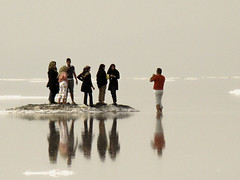
You’ve got your fly fishing gear with you, but there’s no rivers or streams nearby. Just lakes and ponds. Well, guess what? Get that fly gear out with you on the lake!
Many people seem to have the mistaken impression that fly fishing is only for rivers and streams. Nothing could be further from the truth. Often referred to as “stillwater” lakes and ponds can offer some tremendous opportunities for the fly angler.
Generally speaking, fish grow larger in lakes and ponds than they do when they are living in a river all year. And contrary to some beliefs, stillwater fish are not always near the bottom when they are feeding. I’ve had lots of fun with the dry fly when casting to rising trout on lakes in Ontario and Alberta.
Approaching a lake that you don’t know where the fish are can sometimes be a bit more challenging than fly fishing a river, but it’s not impossible. Often, good fishing can be had casting from the bank as it can be from a watercraft.
It is helpful to have some additional gear at times. Along with my floating fly line, I take a long a “slow glass” line which is just subsurface and then a couple of different sinking lines. One of the sinking lines sinks at a rate of 3 inches per second, while the other sinks at 7 inches per second. Sometimes, for good measure I’ll take along a spool with line that sinks at 5 inches per second.
Trying these lines will give you the ability to try different depths and retrieves while attempting to locate feeding fish.
Flies used on lakes can be similar to those used on rivers too. But sometimes, larger beefier patterns like leeches tied from rabbit strip can be more effective. At the same time, many lakes have excellent chironomid or midge hatches, and tying these imitations can be simple and quick.
So don’t let the fact that you may be only near lakes stop you from taking up fly fishing!
You are invited to learn more about fly fishing at All About Fly Fishing.
Follow along with Ian’s regular fly fishing trips at his blog, and be sure to take a look at some favorite fly patterns.
0 comments:
Post a Comment